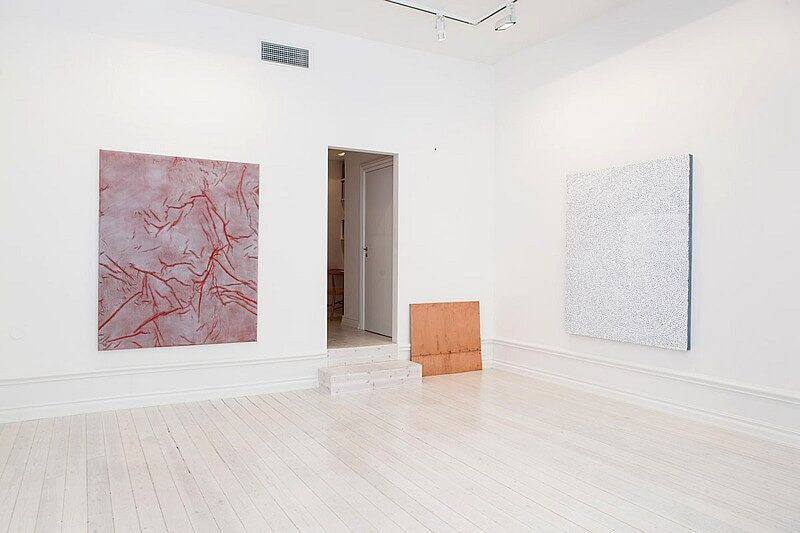FORMAL ABSTRACTS
Stockholm: June 12 - July 12, 2014
Press Release:
McCabe Fine Art is pleased to present the exhibition Formal Abstracts, including works by Mark Barrow, Daniel Buren, Liz Deschenes, Yayoi Kusama, Rudolf Stingel and Danh Vo.
Examining and expanding on the formal aspects of abstraction, the exhibition references modernist formalism and minimalism while bringing these historical art movements into conversation with recent artists and artworks. For each of the artists in the exhibition, the formal element of their work rests on the methodical processes and structures that they impose upon their art making practices. Yet the resulting abstract work is surprisingly much more than the strict steps followed along the way might imply.
Daniel Buren’s decades of repetition of his striped motif, based on classic French awnings, impart a cumulative effect to this seemingly simple pattern once it is re-positioned inside and outside the gallery and used for both discrete art object and site-specific installations. With We The People, Danh Vo creates a full-scale reproduction of the outer copper layer of the Statue of Liberty, but rather than assembling the parts produced, he disseminates them to museums and private collections around the world. In this way, each piece of the monumental American icon becomes an individual abstract sculpture in its own right. Alternatively, Rudolf Stingel’s work is about painting and its processes. His large, silvery monochrome painting with red undertones is made according to a step-by-step formal procedure. The artist himself outlined these steps with photographs and text in his 1989 artist book Instructions, in which he showed the tools needed and mechanical procedures to follow in order to paint a Stingel.
Mathematical models, color theory and the mechanical technology of the loom are also at play within Formal Abstracts. New York-based artist Mark Barrow overlays these diverse systems that span medieval to modern times along with their associated structures in his paintings on textiles. Guided by the points of intersecting thread on the linen hand-loomed by his wife and fellow artist Sarah Parke, Barrow adds tiny dots of paint to these intersections. The color of both paint and thread follow carefully developed formulas based on the RGB (red, green and blue) color model, also found in televisions, computers, mobile phones, video cameras and projectors.
Yayoi Kusama methodically creates her paintings by applying paint to canvas in small looping gestures. The degree of controlled repetition in these large paintings is almost hypnotic in its uniform yet clearly handmade effect. Looking closely at the surface of her painted nets offers a glimpse of infinity in the minutiae, but also reveals itself as a veil between different realms—whether between the artist and the world around her, the artist and the viewer, or the material and the spiritual worlds.
Adding to the range of media in the exhibition, Liz Deschenes’s Shift Rise #08 uses the early photographic procedures of photograms. Deschenes makes her camera-less photographs by exposing photosensitive material to moonlight. She systematically experiments with light and surface to create art objects that are meditative and beautiful in their subtlety and nuance. The intensity of moonlight on a given night, depending on the moon’s phase and environmental conditions, and the length of exposure time are some of the formal elements that influence her work.
The artistic practices used to create the works in Formal Abstracts can be described as methodical and restrained, and yet these calculated procedures are not the sum of the resulting artworks. The featured artists find a way to balance formal procedure and rules with artistic objects that still impart a subjective and even emotional impact on the viewer.
-Text by Nicole Smith
McCabe Fine Art
Noted art advisor, dealer and collector Paul Frank McCabe opened McCabe Fine Art in Stockholm, Sweden in 2013. An extension of his seventeen years of art market experience and connoisseurship, the beautifully renovated showroom in central Östermalm presents works by modern and contemporary masters as well as emerging talents. Through a program of curated, thematic and monographic exhibitions, McCabe Fine Art brings new voices to Scandinavia’s dynamic international art scene.
For more information, please contact us at paul@mccabefineart.com or +46 (0)709 99 77 46.











